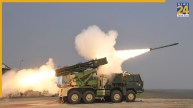A satellite picture obtained by NASA reveals the extent of smog enveloping the cities of eastern Pakistan and northern India. The picture shows Lahore in the Punjab province of Pakistan and New Delhi in India and both cities share a similar fate of being enveloped in a thick layer of grey haze. Lahore, a city with a population of 14 million people located in close proximity to the Indian border, often tops global pollution charts and set new records for pollution this month.
Last week, the Swiss organization IQAir gave Lahore a pollution index of 1,165. In New Delhi and its surroundings, the pollution rates are also relatively high, hovering around 350. However, an Air Quality Index (AQI) of less than fifty is said to be safe.
Also Read: October’s Most Polluted Cities In India; All Top 10 Located in NCR
To avert the risk of exposing the children to communicable diseases, Pakistan has shut schools in Lahore until November 17 due to the deteriorating weather. The index rose above 2,000 last week in Multan located about 350 kilometres away, AFP reported.
Many parks, zoos, playgrounds, monuments, recreational and open public areas and spaces have been closed; tuk-tuks with two-stroke polluting engines and restaurants using unfiltered barbeque methods are prohibited. Punjab province has set up a “smog war room” within which they have teams from various departments that coordinate efforts to prevent stubble burning and control traffic.
Each winter, a combination of low-grade fuel emissions from factories, vehicular pollution, and agricultural stubble burning traps pollution over the region due to cooler temperatures and stagnant winds. As stated by the World Health Organization (WHO), the main health threats are pollutants such as PM2.5 that can enter the lungs and blood vessels. This particular type of particulate matter is produced by the burning of raw fossil fuel, dust storms, wildfires, etc and contributes to respiratory and cardiovascular diseases, cancer and cognitive impairment in children.
Vulnerable populations, such as children, infants, and the elderly, are particularly affected by these elevated pollution levels.













